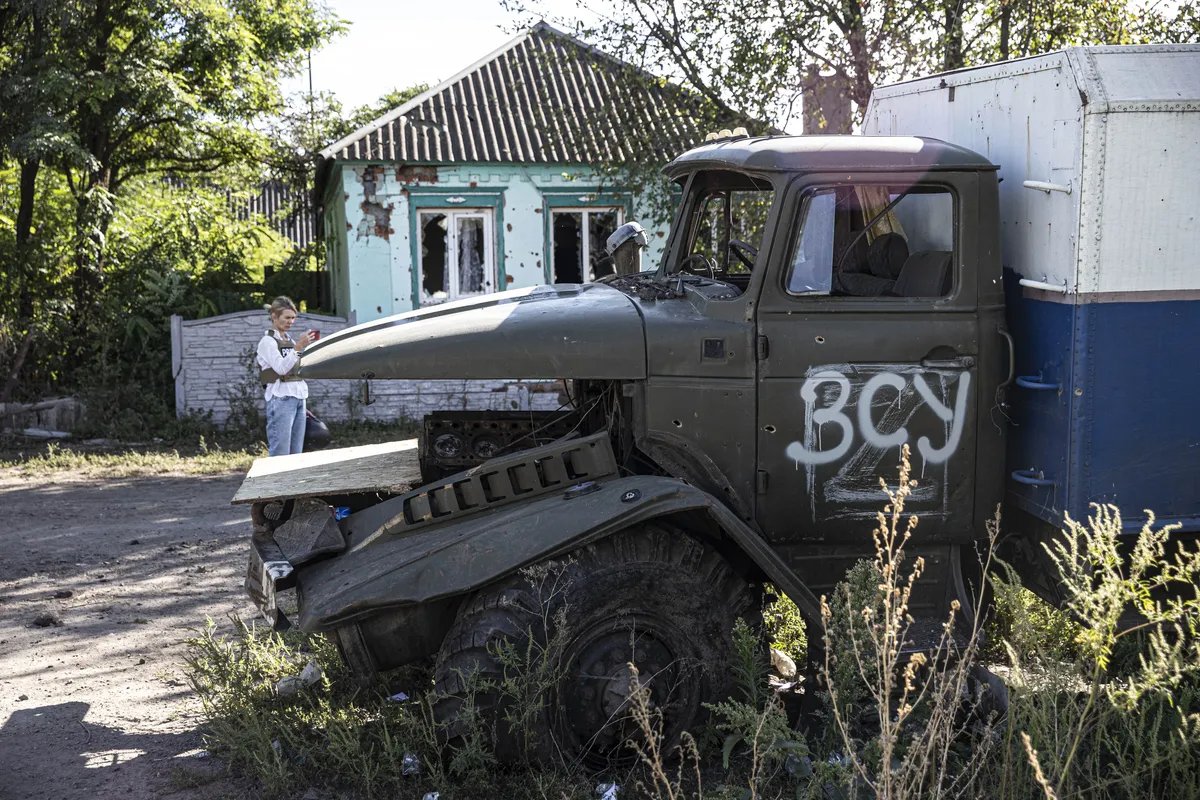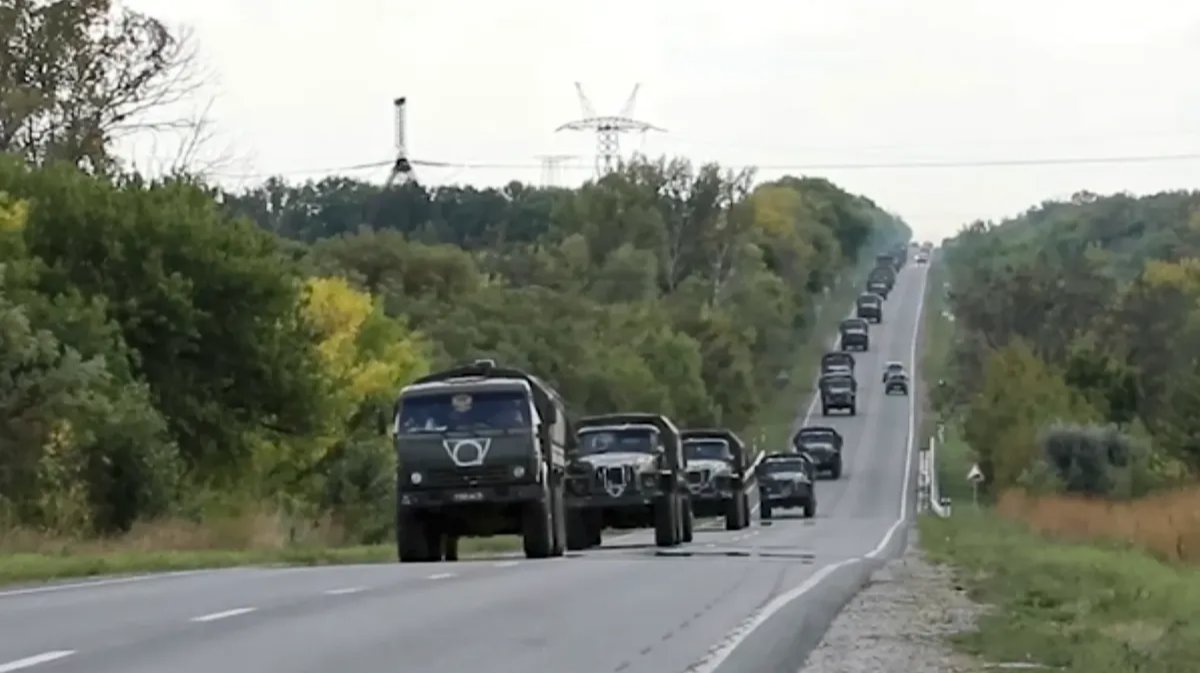Ukraine’s counteroffensive in the regions of Kherson and Kharkiv has marked the start of a new chapter in this war, and its potential outcome could barely be predicted. However, there are some patterns that can be detected over a short-term horizon. To understand those patterns, one needs to take a closer look at two areas: Russia’s foothold on the west bank of the Dnipro river in the Kherson and a triangle between the towns of Balaklia, Kupiansk and Izium in the Kharkiv region. Ukraine’s army has managed to re-capture over 1,000 km² of their land between 1 and 8 September, liberating dozens of settlements from Russia’s occupation, according to their official statements. Russia’s deployment of more than 10,000 soldiers near Izium, whose objective was to capture Sloviansk and approach Kramatorsk, is now running the risk of getting encircled.
Moscow’s General Staff started moving additional troops to the south, including the west bank of the Dnipro, in August. There were two reasons behind this. Firstly, Russia was preparing an offensive of Mykolaiv, Odesa, and, most likely, Kryvyi Rih, too. Secondly, Russia’s General Staff and the Kremlin started taking Ukraine’s plan on re-capturing Kherson seriously by late July; the plan was openly discussed by Kyiv. Rumour says Vladimir Putin ordered that the city must be kept whatever it takes. Fact is that Russia stacked 25 to 30 thousand troops in the west bank by the end of August. Some of them were moved from Donbas, and the others were brought in from Russia’s mainland. Those were the reserves kept for capturing the rest of the Donetsk region. This move resulted in Russia’s deployment in Ukraine’s east becoming much weaker.
Balaklia, Kupiansk, and Izium
Ukraine’s army gained a good opportunity to launch their counteroffensive against the weakened Russian forces in the Balaklia — Kupiansk — Izium triangle. It is fair to say that this area was selected due to the fact that Russia had had certain potential of making further advances here. For instance, the contact line configuration in this area was disadvantageous for Ukraine’s army as huge penetrations into the frontline were challenging their operational manoeuvres and required a lot of reinforcements to hold Russians down.
But the main thing is that de-occupying Balaklia opens up potential for re-capturing Kupiansk and Izium, two strategically important cities that play a key role for the transport routes in the region.
Those routes are used by Russia to supply almost all their troops in Ukraine’s east.

Photo by Metin Aktas/Anadolu Agency via Getty Images
There is no detailed information on how things are going in the Kherson region as of yet, though. But marking the settlements mentioned by both Russian and Ukrainian Telegram channels and official news reports on the map may help us reconstruct the current situation in the region.
- Ukraine’s army breached Russia’s unsolid defences at Balaklia on 5 September and proceeded further northeast facing little to no resistance.
- The next day they cut off the M-03 highway going north of Izium, reached the locality of Volokhiv Yar 15 km away from Balaklia, and arrived in Shevchenkove on 7 September, taking a major road hub under control.
- On 8 September they headed for the locality of Senkove, located on the river Oskol, and Kupiansk. Senkove is a place where Russia had one of its major supply routes. Russia’s Telegram channels posted pictures and footage showing the consequences of Ukraine’s impressive shelling of Kupiansk on the same day.
1 — Balaklia ; 2 — Shevchenkove; 3 — Kupiansk; 4 — Izium; 5 — Kunie
Source: Rondeli Foundation. Georgian Foundation for Strategic and International Studies.
But this is only part of the problem for the Russian army. Kupiansk is the key transport hub of all Donbas. There are two major railroad lines connecting the town with Russia: one goes though Vovchansk to Belgorod, while the other connects Donbas with Valuyki and many other railroad hubs in Russia’s regions of Belgorod and Voronezh. Those lines are used to supply Russia’s forces near Kharkiv, Sloviansk, Bakhmut, and Donetsk, i.e., key areas of combat in Ukraine’s east. Losing Kupiansk or at least making it prone to Ukraine’s fire would put Russia into a very tricky situation.
Moreover, Ukraine’s reaching the river Oskol and possibly advancing to a highway intersection near the locality of Kunie make circling Russia’s forces a much easier task, leaving them with little supplies and stranded between two rivers: the Oskol in the northeast and the Donets in the southwest.
Ukraine’s success in the Kharkiv region may be explained by several factors.
Firstly, Russia’s forces in the area were mainly police-like units of the National Guard who had been unprepared to real combat
and comprised of “DPR” and “LPR” residents, as well as paramilitary troops from Russia’s mainland. They possessed no military experience and had very little understanding as to what was going on and why would they need to risk their lives.
Secondly, Russia’s General staff either did not take intelligence data about Ukraine focusing their troops at Balaklia seriously or simply did not have enough reinforcements to cope with the upcoming counteroffensive. Ukraine, by contrast, has well-prepared units equipped with both artillery and armoured vehicles from the US and Europe. And finally, instead of stopping to storm settlements, Ukraine moves its troops around them, forcing the local Russian garrisons to surrender.
Obviously, it is impossible to predict how the situation in the Kharkiv region will develop. A war is a war.
Russia still has its reinforcements, so further Ukraine’s advance may stall or even stop in the nearest future.
This is why Ukraine’s General Staff shares very little about its activities in the east. It is safe to say, however, that the frontline has changed drastically in the region to Ukraine’s advantage, and Russia will need to move more troops here, making other sectors of the front weaker.
The west bank
The events in the east drain people’s focus from the situation in the south, namely in the region of Kherson, which is quite interesting to look deeper into.
The Russia-controlled foothold on the west bank of the Dnipro river is something Kyiv considers a most serious threat. “Russia will have their biggest opportunities should they advance further to the Southern Buh river using their foothold on the west bank of the Dnipro,” Valery Zaluzhny, the Commander-in-Chief of Ukraine’s army, said a few days ago, agreeing with his colleague, former commander of the Ukrainian Air Forces, Lieutenant General Mykhailo Zabrodsky. “Russia’s success in the south might have a dual effect should they manage to use it quickly and wisely. On the one hand, they will find it easier to capture Mykolaiv and Odesa. On the other, they will be able to threaten Kryvyi Rih and then, potentially, the central and western regions of Ukraine.”
Preparing to clear off Russia’s forces from the west bank became Ukraine’s top priority in the second half of the summer. It is notable that Ukraine spoke much about their plans to liberate Kherson; perhaps too much for a side that is actually preparing a large offensive. It is possible that they were trying to provoke Russia into moving their troops from the east, and if so, they did a great job.
Source: Rondeli Foundation. Georgian Foundation for Strategic and International Studies.
Potential routes of Ukrainian advance
Ukraine reported that its army had breached the first line of Russia’s defence and started its offensive on the west bank of the Dnipro on 29 August, a few days before Balaklia was re-captured. Ukraine’s counteroffensive in the south has been relatively successful so far: the country’s flag was raised again in Vysokopillia, an important locality on the north-eastern flank of Russia’s foothold. And, what’s also important, Ukraine’s forces moved about 10 km further down south towards the town of Beryslav, located on the bank of the Kakhovka Reservoir.
Ukraine’s offensive here in the south is a slow-going thing, unlike what’s currently going on in the Kharkiv region. Russia’s army has created three lines of defence here with multiple concrete formations and minefields. Breaching this defence is impossible without lots of heavy weaponry, namely heavy-caliber armaments and armoured vehicles, and might cause huge losses, which Ukraine finds unacceptable. Therefore Ukraine’s General Staff is supposedly counting on protracted warfare here, draining Russia’s munitions, fuel, and other equipment necessary for combat. For this, Ukraine has destroyed all permanent bridges over the Dnipro in the region and are now holding all pontoon crossings at gunpoint. As a result, Russia’s 25-30 thousand group of forces is now trapped. Its supply lines are seriously crippled and may be soon minimised, so, its war-making capacity will decrease each day, which will eventually force them to either surrender or evacuate to the east bank. Such a rout will have harsh consequences for Russia’s military and specifically political activities.
Делайте «Новую» вместе с нами!
В России введена военная цензура. Независимая журналистика под запретом. В этих условиях делать расследования из России и о России становится не просто сложнее, но и опаснее. Но мы продолжаем работу, потому что знаем, что наши читатели остаются свободными людьми. «Новая газета Европа» отчитывается только перед вами и зависит только от вас. Помогите нам оставаться антидотом от диктатуры — поддержите нас деньгами.
Нажимая кнопку «Поддержать», вы соглашаетесь с правилами обработки персональных данных.
Если вы захотите отписаться от регулярного пожертвования, напишите нам на почту: [email protected]
Если вы находитесь в России или имеете российское гражданство и собираетесь посещать страну, законы запрещают вам делать пожертвования «Новой-Европа».

